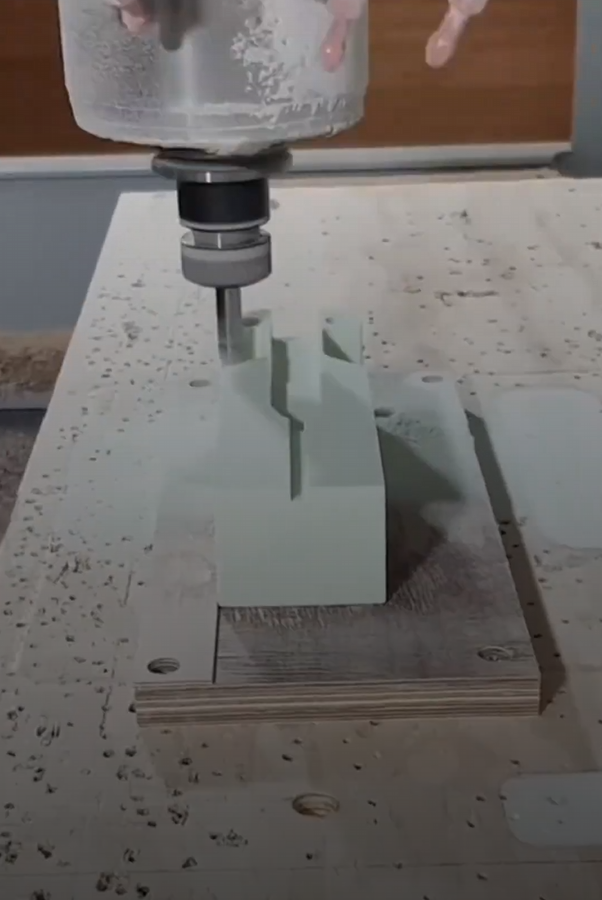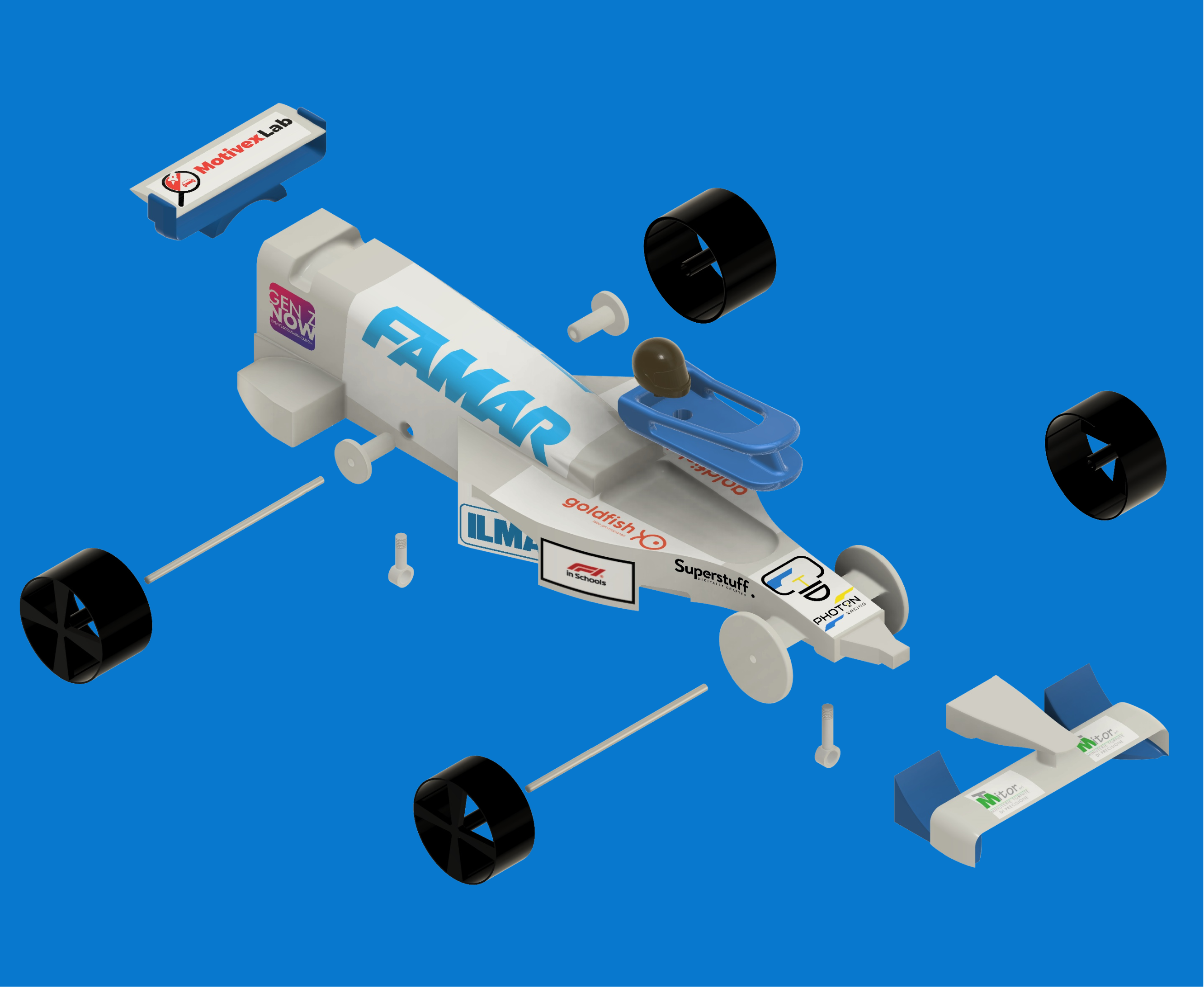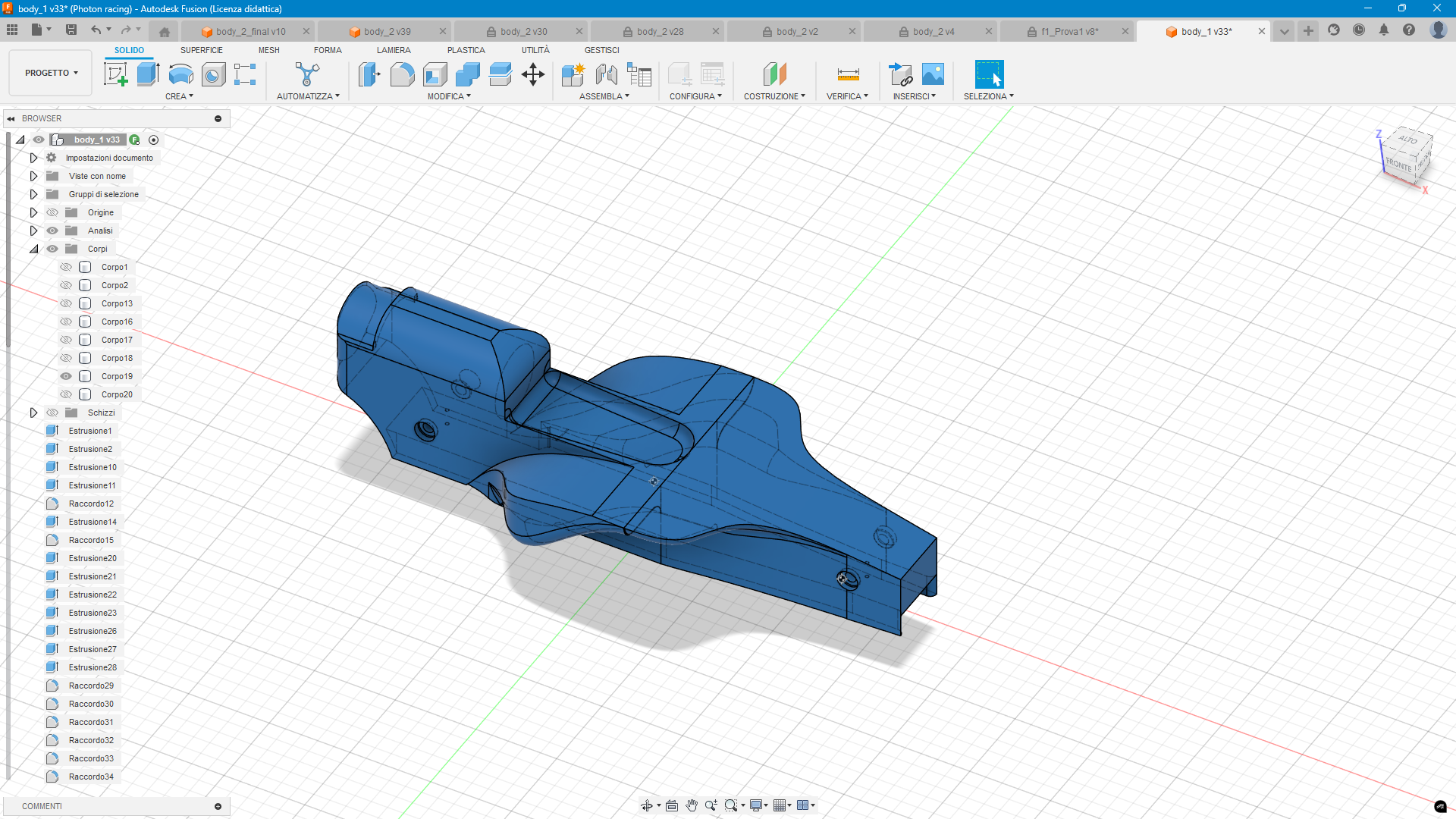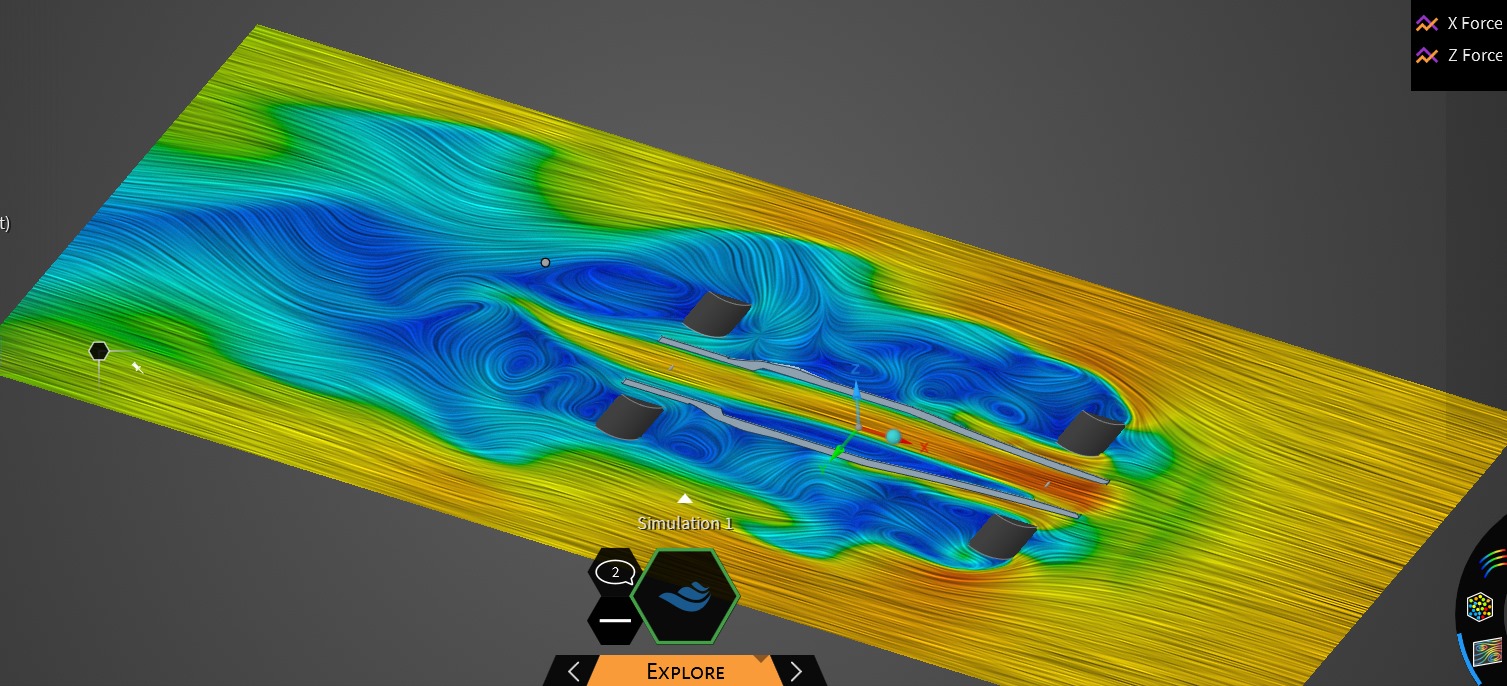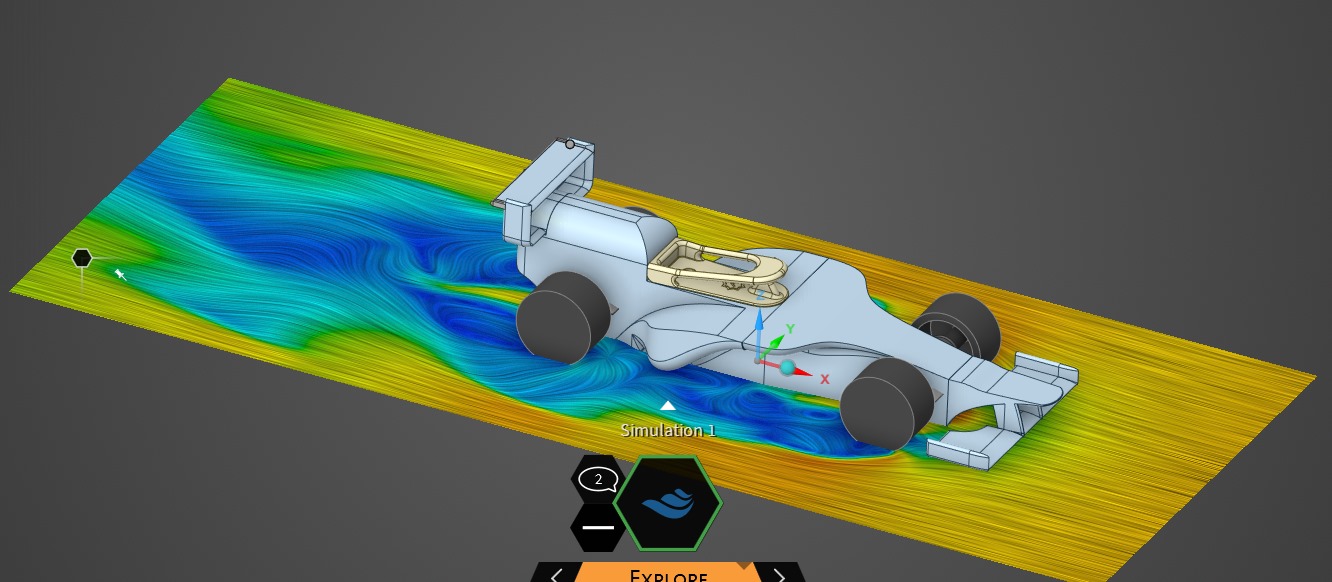Manifacturing
Thanks to our partner Famar, we were able to craft our
body at Ilma. We started from the block provided, and
by precisely milling it, we took off materials giving life to
our prototype. Since we didn’t have access to five axis
machinery, we had to first mill the bottom part of the
body, then create a support structure to keep it stable
and finally mill also its upper part. In the process were
used drills of different sizes, from larger ones to clear up
the exceeding material to the smallest one they had, 3
mm, to refine the car. We also made our own tether
guide lines, turning them out of aluminum, so that we
could secure them by screw threads
Apart from the body and the tether guide lines every
other component, that is the wings, the halo and the
support structures, is 3D-printed. We did a bit of
research to find the best material to use, it turned out
that PLA was one of the best options in terms of
availability, costs and additionally it allows for easy and
perfectly fitted assembly by slightly heating the parts.
For the axles we used the ones we were provided with,
having pretty low friction and being really stable
